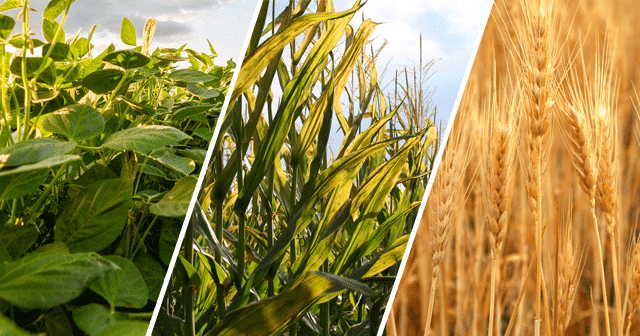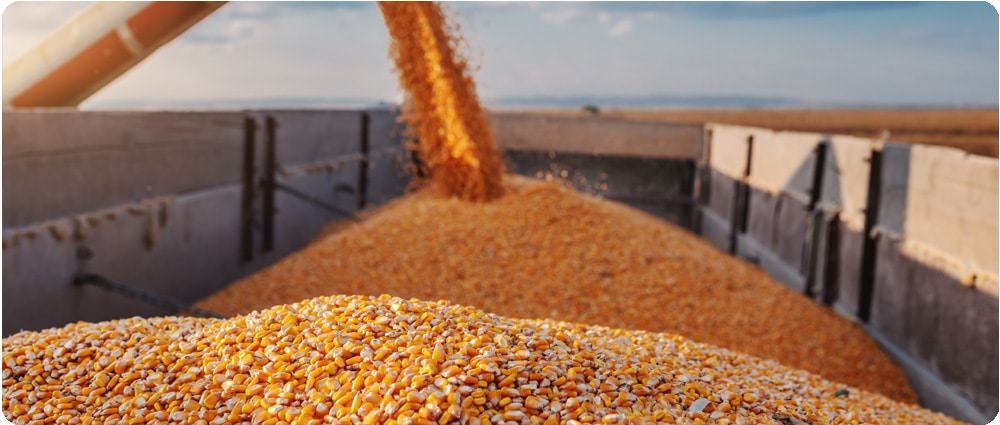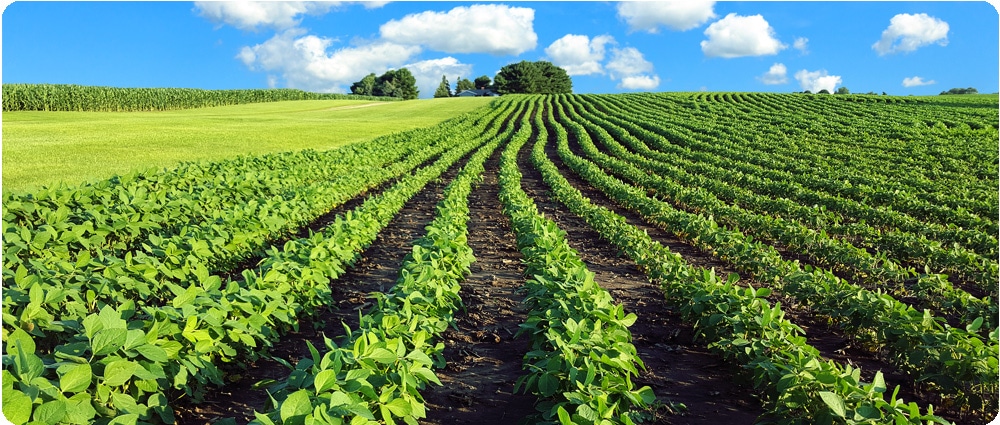Top Crops in America

From grocery shopping to cooking to eating, food plays a large role in our daily life. For those of us working in the Agriculture sector, however, the production of the food we eat takes on even greater importance. In addition, with the world’s population continuing to increase, it is an industry set to see continued growth and expansion.
As one of the top food producers in the world, the United States exports a large number of agricultural products. Farmers in the US watch a variety of factors related to crop production. Factors like crop type and weather influence production levels and market prices.
Many of those farmers use data analytics software offered by DTN to keep up to date on both market and industry trends. Let’s take a look at some of the top crops produced in America, and some factors that influence production levels and market prices in Agriculture, like weather and crops.

Corn production in the United States
It would be impossible to make a list of crops in America without mentioning corn. Producing an average of 14 billion bushels each year – a whopping 356 million tonnes – it isn’t surprising that the US is the world leader in corn production.
While corn is a staple in many food products for human use, the majority of corn produced in the United States is actually for livestock feed. Corn products are also used in many other items, including:
- ethanol,
- plastics,
- medication,
- cosmetics, and
- adhesives.
With all of its uses across so many industries, it’s no wonder corn is the biggest crop in America!
Factors that affect corn production in America
Corn production in the United States has been steadily increasing since the 1950s. Corn harvests aren’t always what farmers are hoping for, though.
In Agriculture, weather and crop yield are often closely related. And each year, American farmers face an indefinite number of challenges that can affect their harvest. Not all of these challenges can be easily predicted or avoided.
Because corn is a tall crop, wind damage is one concern for corn growers. For example, when the corn stalk breaks under the pressure of strong winds during intense storms, it is called green snap. This type of damage can destroy a plant and result in a low crop yield.
Another factor that can negatively affect harvest results is the amount of moisture. Too much moisture in the soil results in a lower yield or delayed harvest. Most farmers carefully keep an eye on weather patterns and forecasts to know what to expect and how it will affect their crops.

Soybean production in the United States
The US is also a leading producer and exporter of soybeans, with an average of 4 billion bushels harvested by American farmers each year. Most of these soybeans go on to be used in soy-based food products or as a protein source for farm animals. Some products that use soybeans for production are:
- soy milk, tofu, etc.,
- biodiesels,
- paint,
- plastics, and
- wood adhesives.
Predictions are that the use of soybeans in more industrial settings will continue to increase in the coming years, potentially increasing soybean demand and production in the United States.
Factors that affect soybean production in America
As a general rule, soybeans grow best at a temperature between 70 to 90 Fahrenheit (or 20 to 30 Celsius). If the environment is too cold, this can damage the seeds or cause them to take longer to emerge. The longer the seeds are in the ground increases the chances of being affected by diseases and pests.
When temperatures are too high, heat stress can occur. Heat stress is known to limit crop yield.
The condition of the soil also has an impact on crop yields. For quantifiably better results, soybeans tend to produce better in loose, well-aerated, and slightly acidic soil. Soil compaction (the ground becoming harder and denser) or crusting (having a hard soil layer on the surface) can damage the crop and reduce production.

Wheat production in the United States
The most popular grain in America, wheat is one of the top crops produced and consumed in the US. There are six varieties, with the most common being hard red winter wheat. While more than 80% of 1.8 billion bushels of wheat grown in the US goes into food products, wheat can be developed into other products as well, such as:
- beer,
- medical adhesives,
- paper,
- particleboard, and
- pharmaceuticals.
Factors that affect wheat production in America
As with any crop, wheat yields are highly dependent on the presence and effects of insects, weeds, and diseases. Aphids, for example, are a pest that can damage the roots and stems of the plant or even release toxins that injure the wheat.
Barnyard grass is a weed that can deplete the soil of essential nutrients. These depleted nutrients include potassium, nitrogen, and phosphorus, leaving less for the wheat to use.
Diseases such as common bunt can stunt the plant’s growth. Common bunt replaces the tissue of developing kernels with fungal spores. These bunt diseases lead to a smaller yield or poor quality of the available crop.
Preparation in agriculture: weather and crops
There is no doubt that our world heavily relies on the production and exporting of various agricultural products. As demand and competition continue to increase, American farmers are under increasing pressure to increase their yields despite the assorted challenges they face.
In the digital age, even farming has been transformed into a data-driven industry. Using data insights on weather patterns and other crop yield factors helps countless farmers across the United States to be prepared and increase the efficiency and output of their farms.
DTN insights allow farmers to be profitable and maximize operations and yields by providing them with the most current and accurate information possible. Try a free trial of MyDTN today to see how this service can help you.











 Comprehensive weather insights help safeguard your operations and drive confident decisions to make everyday mining operations as safe and efficient as possible.
Comprehensive weather insights help safeguard your operations and drive confident decisions to make everyday mining operations as safe and efficient as possible. Learn how to optimize operations with credible weather and environmental intelligence. From aviation safety to environmental compliance, our comprehensive suite of solutions delivers real-time insights, advanced forecasting, and precise monitoring capabilities.
Learn how to optimize operations with credible weather and environmental intelligence. From aviation safety to environmental compliance, our comprehensive suite of solutions delivers real-time insights, advanced forecasting, and precise monitoring capabilities. 

